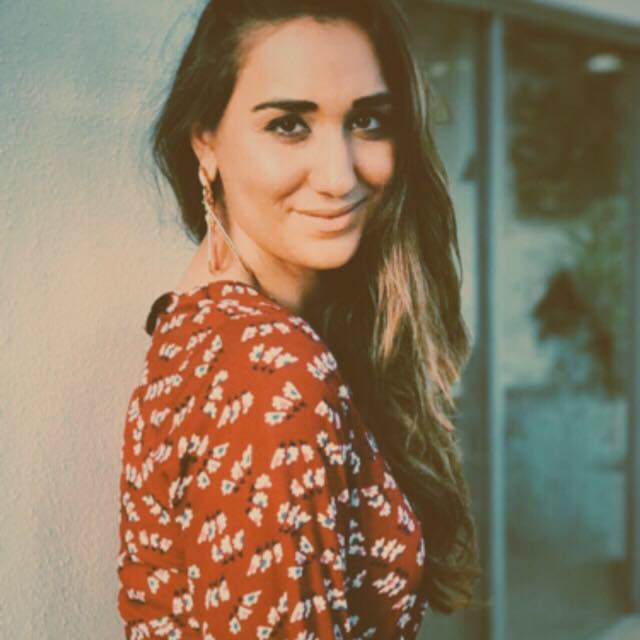“When you buy a Meraki pair, you are buying a piece infused with the artist’s soul – their Meraki.”
Today, we explore the journey of a young entrepreneur and mastermind, Eman Bachani, founder of Meraki Design House. She started the journey inspired by footwear and apparel from her home country, Pakistan. Meraki Design’s main product is its beautiful ethnic, handcrafted leather flats or what is commonly known as the Khussa in South Asia.
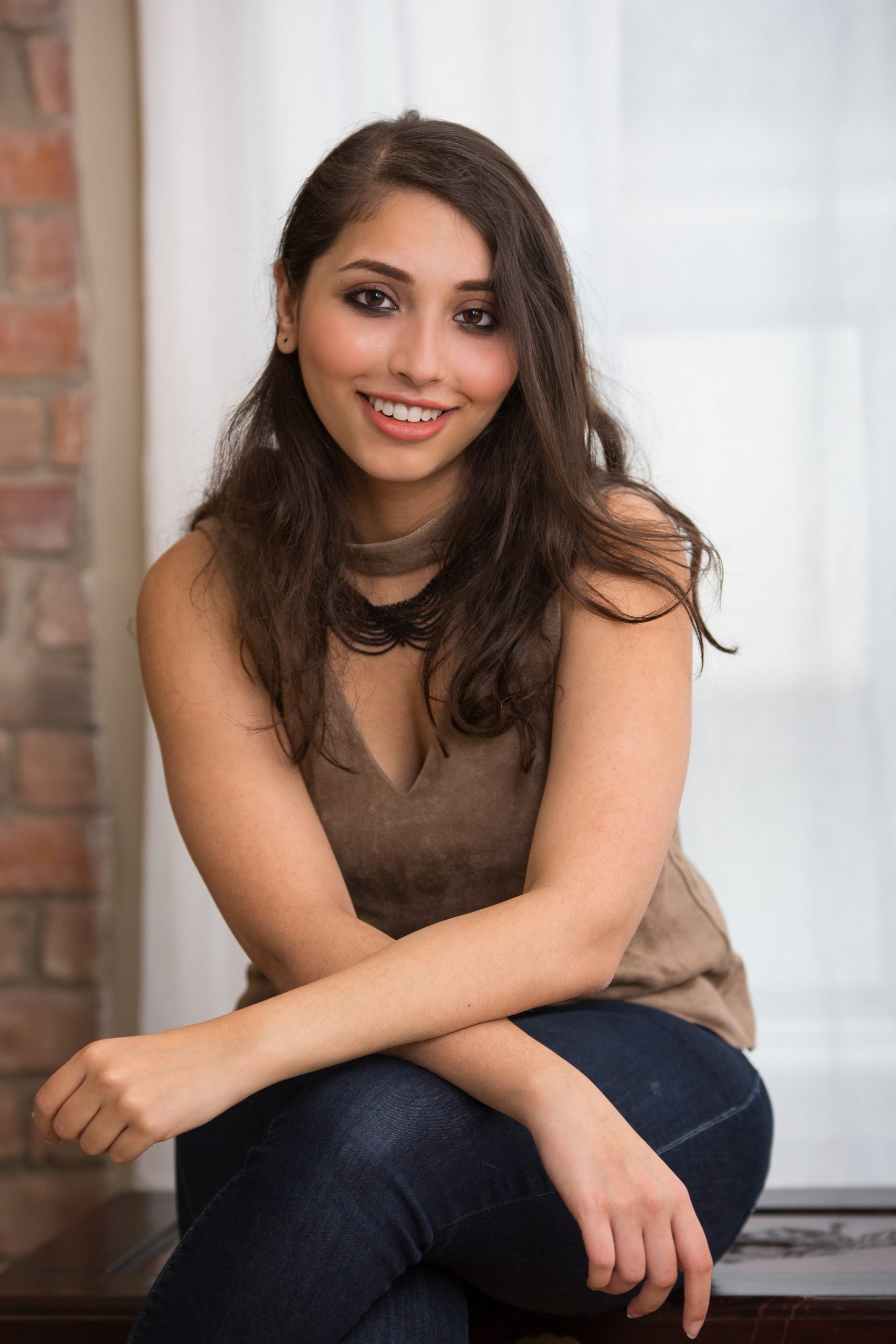
Her labour of love started when she graduated from the University of Toronto, although she always knew she wanted to delve into design and ethnically sourced handmade crafts, empowering artisans. As a BIPOC woman, she has always embraced her roots, the various craft and textile traditions of the Indian subcontinent.
It has been a challenging year and a long winter for us all; however, her fancy flats, with the bling glamour, are the perfect flats to great a bit of that “oomph” in your wardrobe for the approaching summer months. Looking forward to getting out of those boots, Meraki’s flats are quintessential and versatile, preparing you for a lovely day strolling through the park, enjoying patio time and boozy brunches (fingers crossed!), or dressing up a bit in the evenings adding the perfect foot bling to a plain summer dress.
Comfortable and beautiful, Eman’s impetus in bringing these designs to Canada hasn’t only just been to bring footwear and accessories that tell an ethnic tale of their own as most of the production happens in India. She has not only worked and designed all the flats herself but has also supported other brands and designed accessories such as Ajrak block print hairbands, upcycled Sari throws amongst various other niche products.
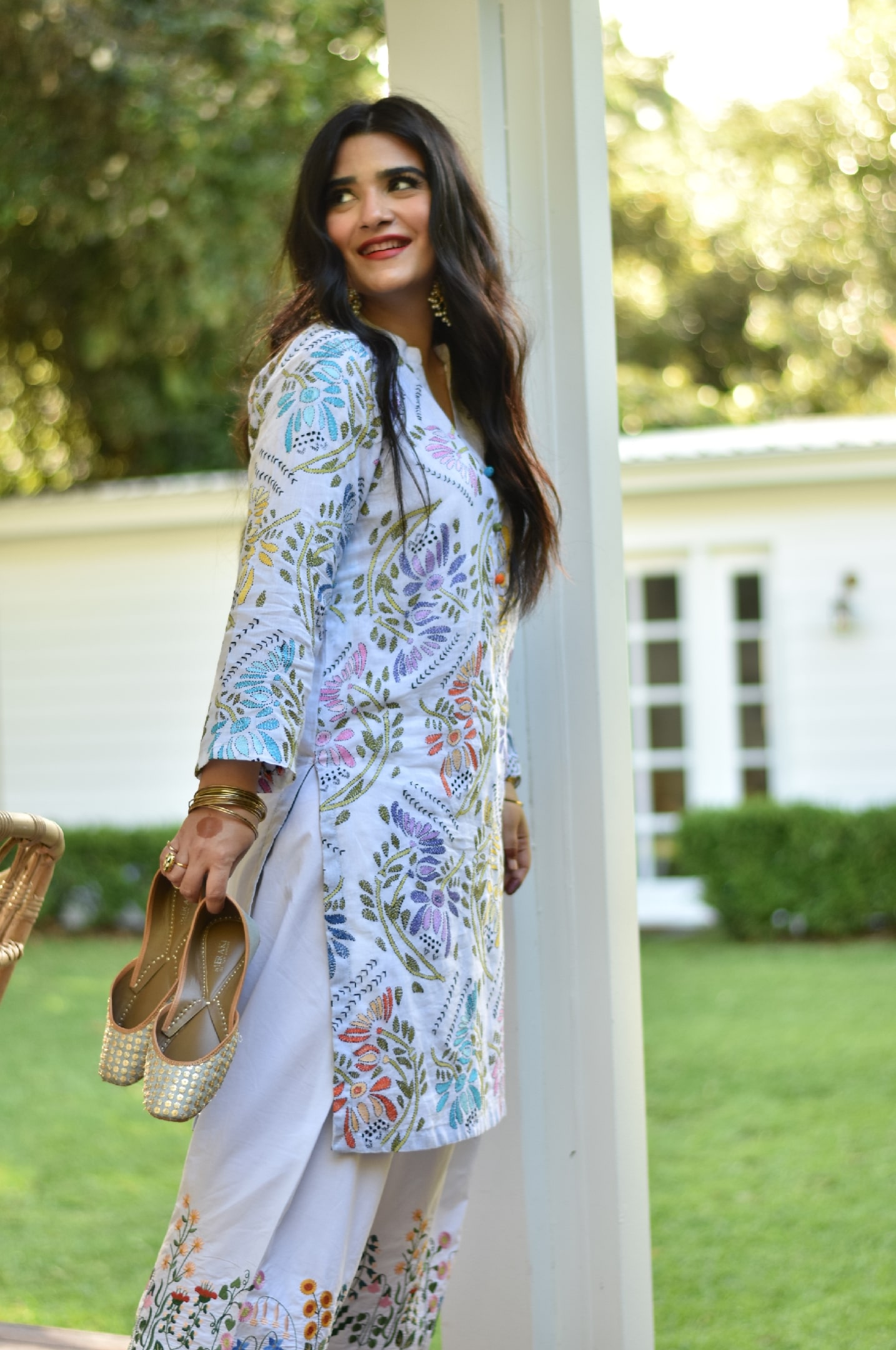
Where did your journey with art start? How and when was Meraki Design House established and how are you evolving its design to suit the audience in Canada yet adhering to the tradition of colours and patterns from Pakistan?
So art has never been an explicit part of my life however over time I have come to appreciate it more than ever. For me, this journey has been more about self-growth. I went to the University of Toronto for Political Science and HR, and thought I would pursue a career in HR. I had 0 experience in design, retail, or e-commerce, but I made it my mission to learn all of it bit by bit. When I look back, I realize the whole journey began because I wanted to wear a better product, and I knew it was possible to make the best version of something I dearly loved but hated to wear. Just like I actively want to work on my self-growth, I also want to constantly improve the design and product, offering the same experience to my consumers.
Most brands working on a similar product focus solely on design but being a brand based in North America, the stamp of “great” service has been crucial for us to grow the business.
In terms of how Meraki was inspired: my own story is that I’ve grown up a chubby kid for the most bit, and what that really meant was that I could never dress up like the “cool” kids did and never fit into anything that was “in” fashion. So an instinct I developed to counter this, and I guess protect myself was to hunt for locally made clothes and accessories because that would automatically mean I am not gunning to follow any trends. Since I grew up in Asia, the “local” products always had an undertone of tradition and culture, which elevated anything simple and basic into tasteful. In fact, my closet and my belongings have become an homage to all the places I have lived and travelled.
As I moved from the Philippines to Toronto, I did recognize that North American fashion and consumer culture is largely driven by mass-market brands that only offer basic and predominantly caucasian centric products with the assumption that all consumers would assimilate to a singular way of dressing and expressing themselves. Furthermore, I also faced two different experiences where ordering products from Pakistan, India, and other Asian markets was a taxing (literally) process and often brands would disappear into the abyss and when the package would eventually arrive, it would end up costing an arm and a leg more because of local regulations.
I needed to change the experience of buying and I needed to change the perception of products that came out of South Asia. Most women, including myself, share a universal love for footwear, whether to admire, wear or collect and thus when random people would stop me on the street to ask me about my “Indian” looking shoes, I really wanted to have them know that these shoes were as good as any other shoes, except better because they were painstakingly made by hand using leather and incorporating the art of embroidery and beadwork- but most importantly, these shoes were designed for you to make them your own with their ability to mold to your feet. When that entire realization came together, I just went for it. I knew many people out there would appreciate this as much as I did, and that’s where Meraki was born.
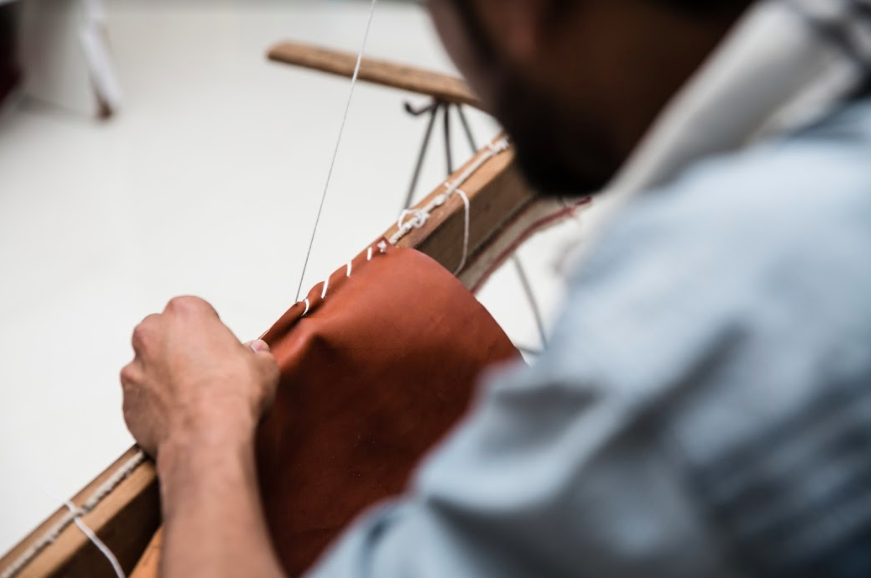
Tell us about your products, what can we shop for online? (Describe your accessories, prints, and garments also)?
So our hero category is flat footwear. To date, we’ve only dabbled in the south Asian style of flat footwear or “Khussa,” but over the next few months, we’re adding in a few more kinds of flat shoes that would appeal to women who don’t like the closed shoe format or feel restricted in these flats because of the narrow build.
Within footwear, we’re offering our best sellers, which are essentially the most elevated version of a plain colored flat with a touch of Meraki craft and a line of everyday printed flats, and then some festive flats centered around meaningful gifting and celebratory use.
From time to time, we’ve added and sold products we appreciate as consumers that also happen to align with the Meraki ethos. Our handcrafted ajrak headbands are an example of this, and so are our handmade kantha stitch blankets.
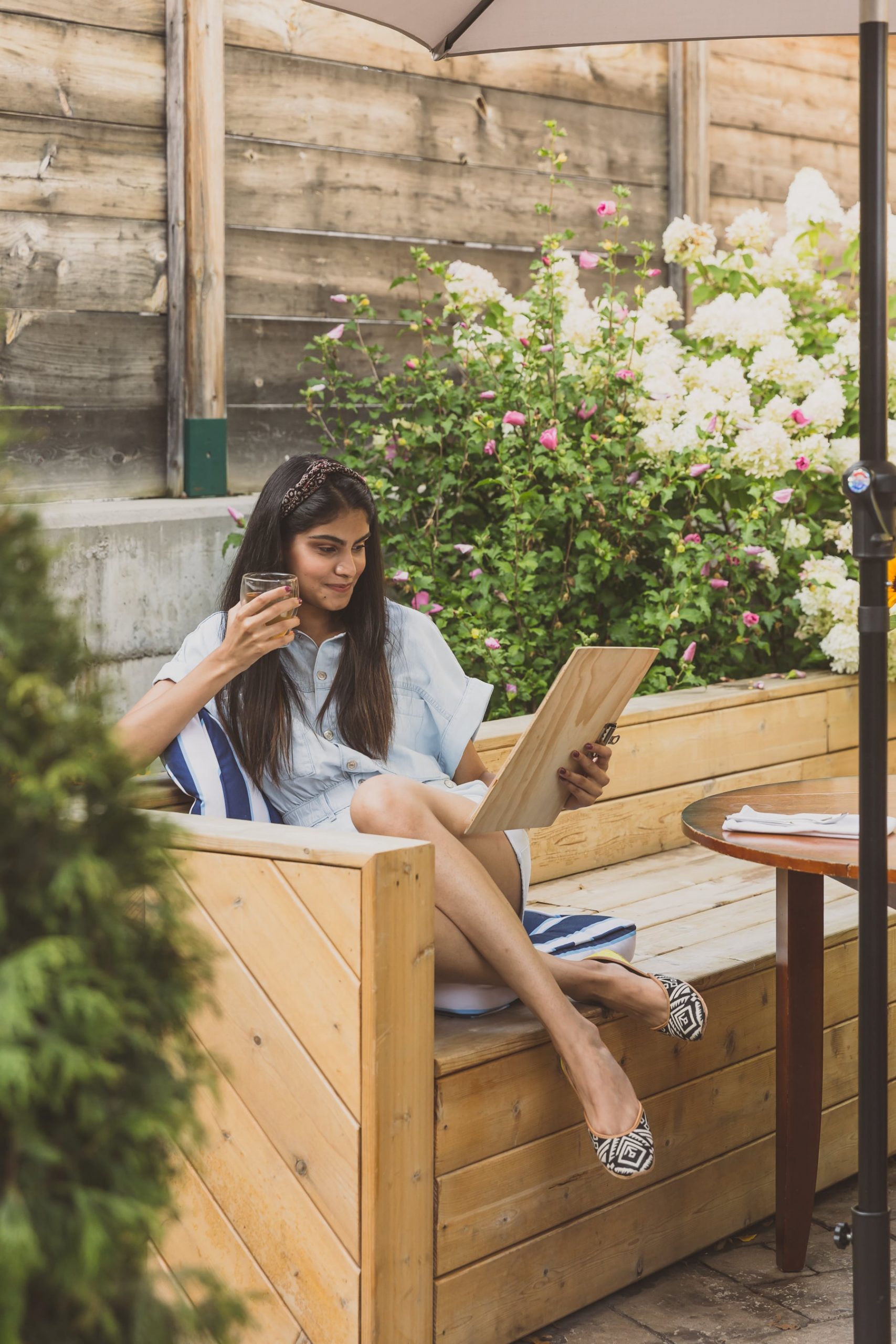
What is your most favourite product, something you put in a lot of creativity in? Also something that has become a hot seller? How are your prices also competitive relative to the market in Toronto?
I connect most with all the ajrak printed shoes we’ve designed. Ajrak is a traditional form of block print created using wooden blocks and often affiliated with Sindhi culture. I am Sindhi and thus have grown up seeing Ajrak a lot but could never actually use it in anything practical thus decided to incorporate the prints in our shoes. It’s been controversial as lots of people have reached out saying we’re disrespecting a cultural item, but the way we see it, it’s the only way we can extend the craft into something that’s accessible to more people. At least this way, more and more people get to know and learn about ajrak. Using the print on select shoes also makes them 100% handcrafted because both the fabric/print and the shoe’s build are handcrafted.
We’re pretty competitive for a top-quality product, primarily when the company is based out of Canada with really, really high overheads. However, to remain accessible to as many consumers as possible, we’ve built collections at varying price points so we can offer something for almost everyone.
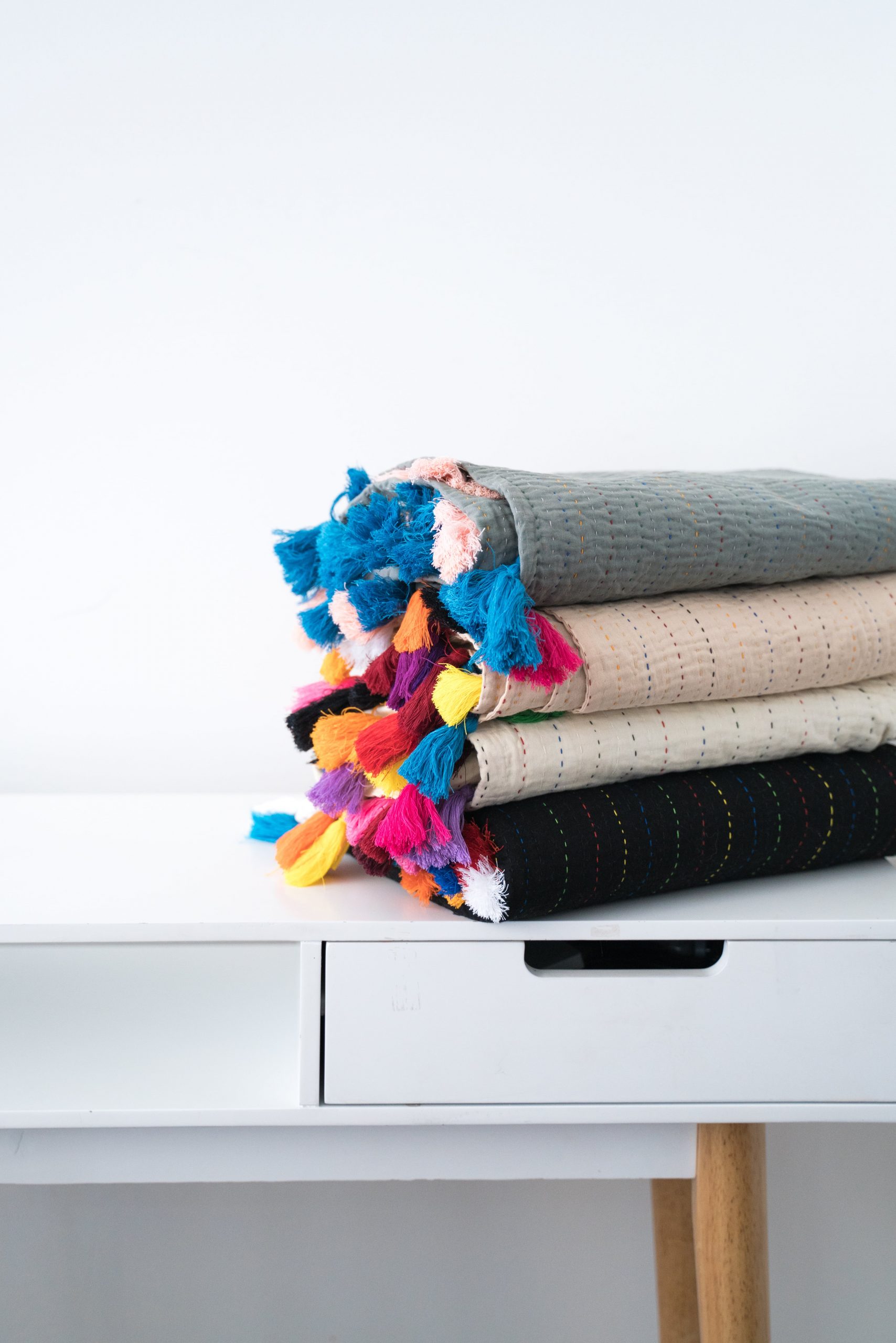
Are there other partners in the business, not including the craftsman? If not, tell me how this is an eco-friendly business that empowers the local craftsmen there? Do they get profits, do they learn? You mentioned that you want to train them further how do you plan to do so? (Basically I want to get an idea of how Meraki Design house is also empowering craftsman too!)
No other partners as such but our manufacturing partners are robust because they’re training craftsmen to use base techniques and tools not only on traditional shoes but also on clothes. We’re still a relatively small business and hence are not able to employ these artisans 365 days a year, thus we’re proud to work with partners that can ensure that artisans and craftsmen can apply their skills to other products and work at capacity throughout the year.
For us, the most important piece of this puzzle has been job security. When we started our research around production, we encountered several vendors who were outsourcing the production of traditional south Asian shoes to countries like China (which intuitively makes 0 sense) but is prevalent to keep costs in check. Our ethos has always been to keep manufacturing and production with artisans who’ve known this craft their entire life, thus we primarily want to guarantee them job security and furthermore offer them flexibility of work when it comes to challenging times like the one we’re in. If these craftsmen are to leave for work in factories and other manufacturing verticals, 99% of them would have to work in person during covid whereas we’ve been able to provide the means for them to continue their work from home, which is almost impossible in a manufacturing environment.
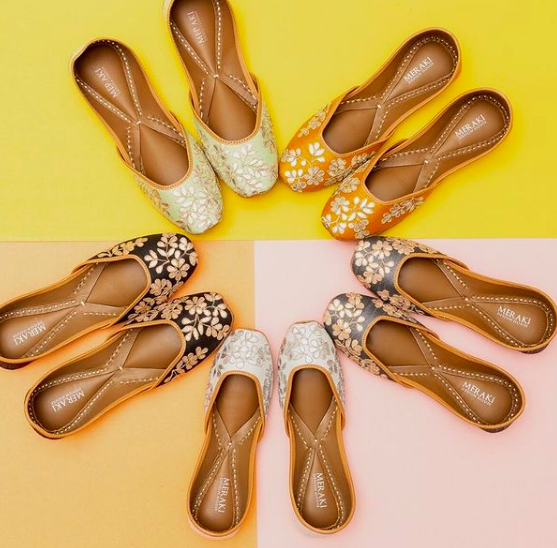
Do you have a physical shop, have you exhibited at pop us, fairs, shows or summer markets pre-pandemic? Did you transition to online recently?
We’ve actually never had a physical shop and are a digitally native brand. However, we’ve always recognized that most consumers do want to feel 100% certain about fit and sizing before they make an online purchase with a new brand, thus we’ve actively acquired customers through pop-ups and shows where the initial interaction is in person. We’ve also opened our warehouse for drop-in and size consults for consumers who want to come and try on products before they purchase. Of course, this option only suits local customers – but you’d be surprised how many people remember us when they are visiting from other provinces/ and US.
What are the differences between pre-COVID time and now, and how have you adapted strategies / transformed your services so they are still relevant now? Revenue-wise, we know its tough. How have you been able to adapt and generate sales?
In terms of sales strategy, with no possibility of in-person sales and pop-ups, we were forced to invest in digital ads to ensure we were meeting consumers where they were at. This also complimented our international growth strategy because before this we’ve been forced into being a seasonal business because we’re located in Toronto where our product cannot be worn half the year. Running digital ads has meant reaching consumers in Asia and middle east and north africa, where our product can be used 365 days of the year. So while we were facing difficulties with our usual customer base, we were able to sustain ourselves through international customers.
In terms of product, we’ve moved in the direction of a classic/capsule-like product collection because we want customers always to be able to find that one shoe that is versatile enough to be worn on several outfits, in the covid world and beyond. We’ve toned down products centered around festivities and celebrations and instead added products that can get you through day-to-day feeling good.

Any words of wisdom steps for those trying to do similar unique businesses but their strategy/business focus relates to physically being there? What tips in a virtual world?
This is a tough one because I don’t think in-person can ever properly compete online. Some products are a good fit to succeed in a digital environment whereas other products are meant to appeal to a consumer’s senses, and these products need the face time to turn potential customers into loyal fans. However, in times like these where in-person is almost impossible, brands can still appeal to consumers by offering value through one-on-one time. For example, many brands are hosting virtual consults, shade matching when it comes to makeup, and more.
Are you in touch with others bringing in unique products from South Asia into the industry, and what have their experiences been and taught you?
Most people I cross paths with bringing in complementary products (e.g clothes) but primarily for the south Asian consumer. For me, while the south Asian consumer is significant, I want to increasingly showcase my products and our heritage to consumers outside of our culture and thus change the narrative around high-quality goods coming out of South Asia. In terms of learnings and experiences, I think I’ve learned a lot of insights about the right partnerships with influencers and such but the real learnings have come from fellow e-commerce founders who are constantly sharing tips on growth hacking, technical tools and content strategy.
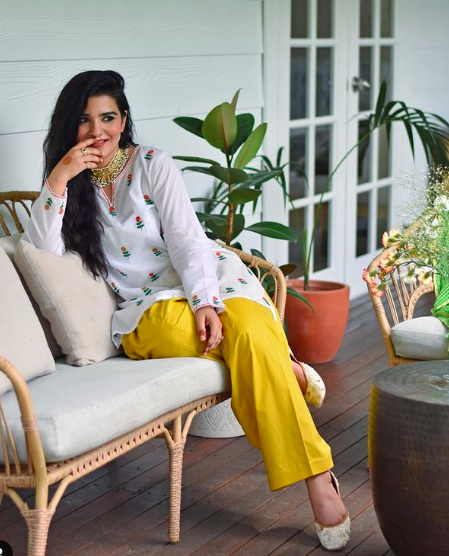
What kind of tools/support is needed to help your business flourish, do you believe? Have you looked into small grant funding or micro-financing/loans?
So we’re fully bootstrapped at the moment and from time to time, we need more resources to invest in inventory. Unfortunately, most grants do not view a culturally-rooted brand as scalable (even though the south Asian diaspora is consistently the fastest-growing ethnic group in North America and Europe). It’s disappointing but we don’t let this limitation get in the way as we’ve explored other financing options through Shopify that help us get through challenging situations when we need cash fast. From time to time, we also have pre-sales on select products that have high projected volumes and while that was initially intended to help us plan sizing better, it has also been really great in partially funding the production run, allowing us flexibility with our vendors.
We absolutely love all the Meraki Design online shop products. We’ve grooved in their comfortable flats and bought lots for our friends, including her headbands and other accessories! Our personal favorites from the current flats collection are Lena, Reyna, Kailie, and the Bella! From Meraki’s home ware our favs are the upcycled kantha throw in white and the upcycled sari throw!
Eman is one powerhouse, busy and ambitious woman, and we can’t wait for our readers to bring in some summer fun flats in their wardrobe, pure leather. They will last for ages! By the way, you can also customize your flats, made to order!
To shop online from Meraki Design House, check out their website and Instagram handles:
Website: https://www.merakidesignhouse.com/
Facebook: @merakidesignhouse
Instagram: @merakidesignhouse
